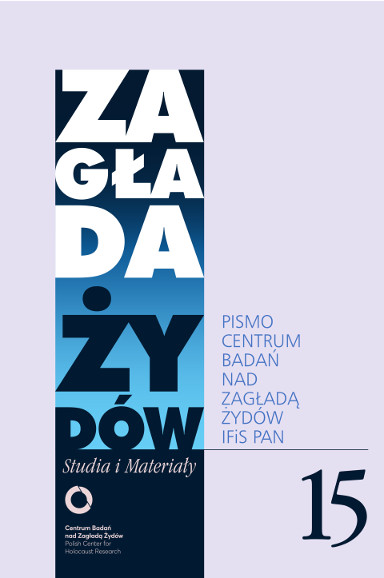No. 15 (2019)
The studies and the edited primary sources included in no. 15 of our annual focus on figures of religious thinkers, rabbis, and also religious Jews active during the war as well as their writings, which our authors comment on and interpret. Havi Dreifuss of Yad Vashem makes us familiar with Matys Gelman — the unknown leader of an unknown Hassidic movement during the Holocaust. Daniel Reiser writes about rabbi Kalonimus Kalman Szapiro’s famous sermons delivered in the Warsaw ghetto. Barbara Krawcowicz presents the theodicean threads in the war-time sermons of Bratislavan rabbi Shlomo Zalman Unsdorfer. Adam Kopciowski discovers the subject matter of God and the Holocaust in letters of rabbi Hersz Majlech Talmud from the Lublin ghetto. Adam Sitarek analyzes a letter of Jakub Szulman from Grabów…
 English
English
 Język Polski
Język Polski



